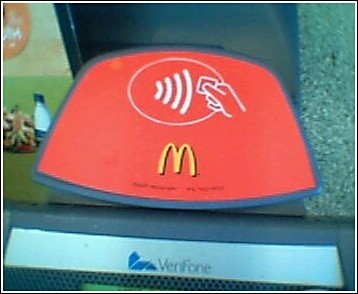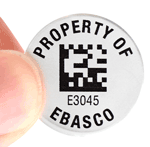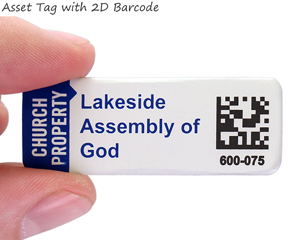Can facial recognition technology replace RFID?
Facial recognition technology (FRT) is set to topple Radio Frequency Identification (RFID). It’s less expensive and can be used in a greater variety of ways. Retail, events, marketing, and payment solutions are all using FRT. In fact, FRT and visual identification systems are being used to pinpoint people and inventory, too.
FRT is more affordable than RFID

An RFID reader at McDonald’s. Image by Bradley Newman.
“RFID hardware is prohibitively expensive for most brands. I have worked with customer activation projects that have spent between $50,000 and $75,000 on just the hardware,” says Jen Ohs of Brightline Interactive.
In contrast, video cameras, which are hardware for FRT, are much cheaper. Software and analytics for FRT are also being developed for comparatively small monthly fees.
FRT can track more data than RFID
Additionally, Ohs feels that FRT can replace RFID as it is a more intuitive technology. She goes on to say that RFID misses out on tracking what users often don’t need to specify while registering for events- for instance- age, gender, ethnicity, and importantly- reactions.
Capturing such data is easy in facial recognition technology. Events already use Facebook photos to recognize attendees. Alternatively, a camera can take a photo of a person during registration, to let other cameras track his or her activity during the event.
Facial recognition technology can harness the potential for interactivity at an event. Coca Cola used this technology to great effect in their Summer of Love Tour in Israel. While registering, users could opt in to the facial recognition app, Facelook on Facebook. At the event, users could post updates of what they were doing, to Facebook, simply by looking into Facelook kiosks.
Cameras on billboards identify faces and aggregate demographic data for analysis. Image by Amscreen.
Besides events, FRT is also used by billboards in the UK to track demographics of viewers using certain traits. “These traits can be things that characterise a male or a female or a person of a certain age. For instance if you are a male, it will pick up the cheekbone structure,” says Mike Hemmings, marketing director of Amscreen, a company selling the technology.
FRT applications in retail
Retail stores use FRT to check activity like whether visitors who ask salespersons questions buy items after that. “Brick-and-mortar stores have been disadvantaged compared with online retailers, which get people’s digital crumbs,” says Guido Jouret, from Cisco’s Emerging Technologies.
You can use your face to pay for what you buy in Finland. Uniqul , a Finnish payment solutions company, offers this service to stores, which involves customers looking in a camera. Uniqul connects the person’s facial features to his or her bank account. “The face is a PIN and it’s more like a complete way to identify a person and to provide access to the person’s own Cloud wallet,” says Ruslan Pisarenko of Uniqul.
FRT has applications beyond people too. Visual identification systems can be called FRT for supply chain and industrial sectors. A worker could just look at a product’s bar code, and the system would recognize whether or not it is correct.
Visual identification technology uses cheap optical imaging technology, just like facial recognition technology. Employees can take a photo of a product with a smartphone and upload the photograph. An application will match the photo with a database to identify the product.
Category: Barcodes and RFID














